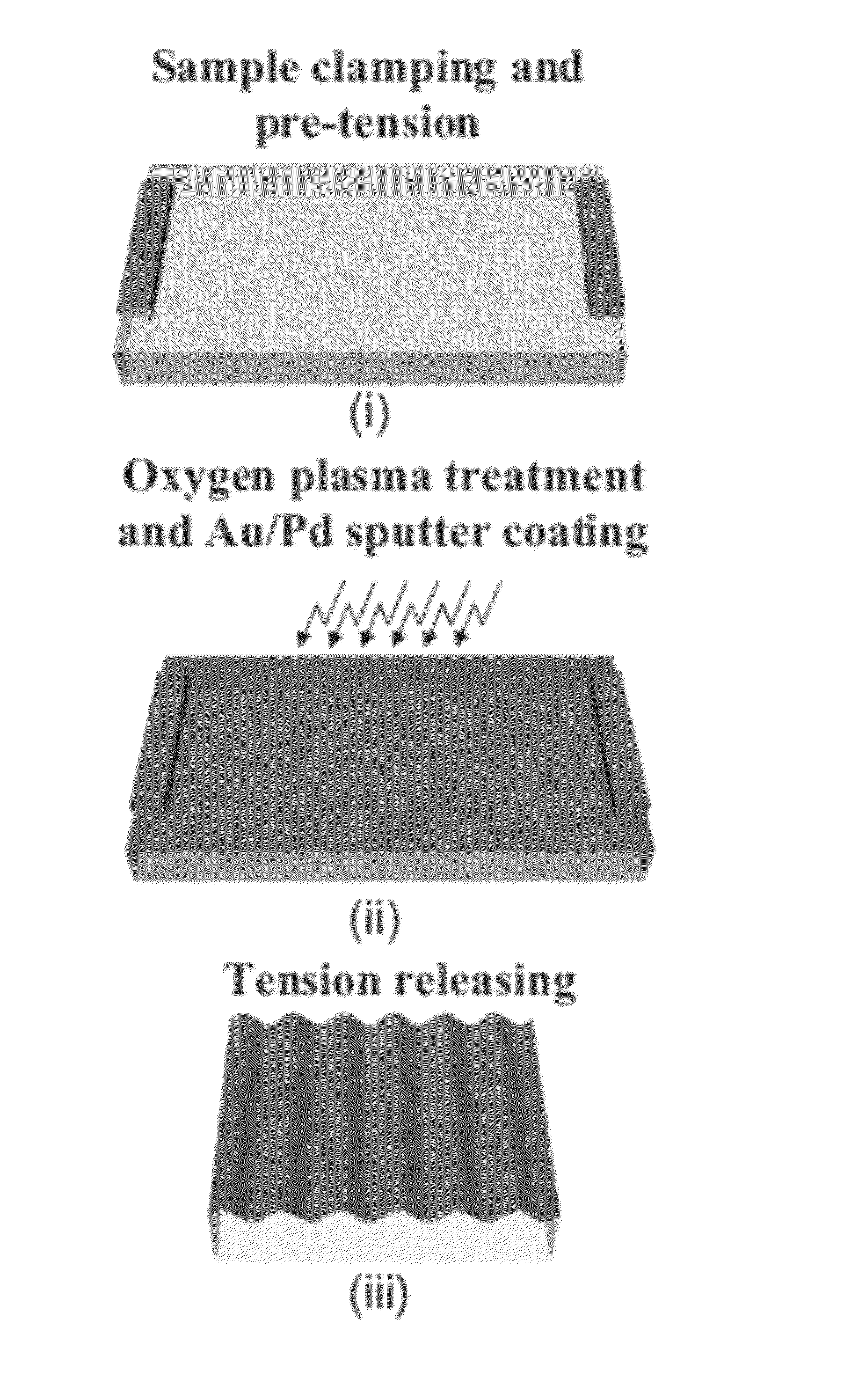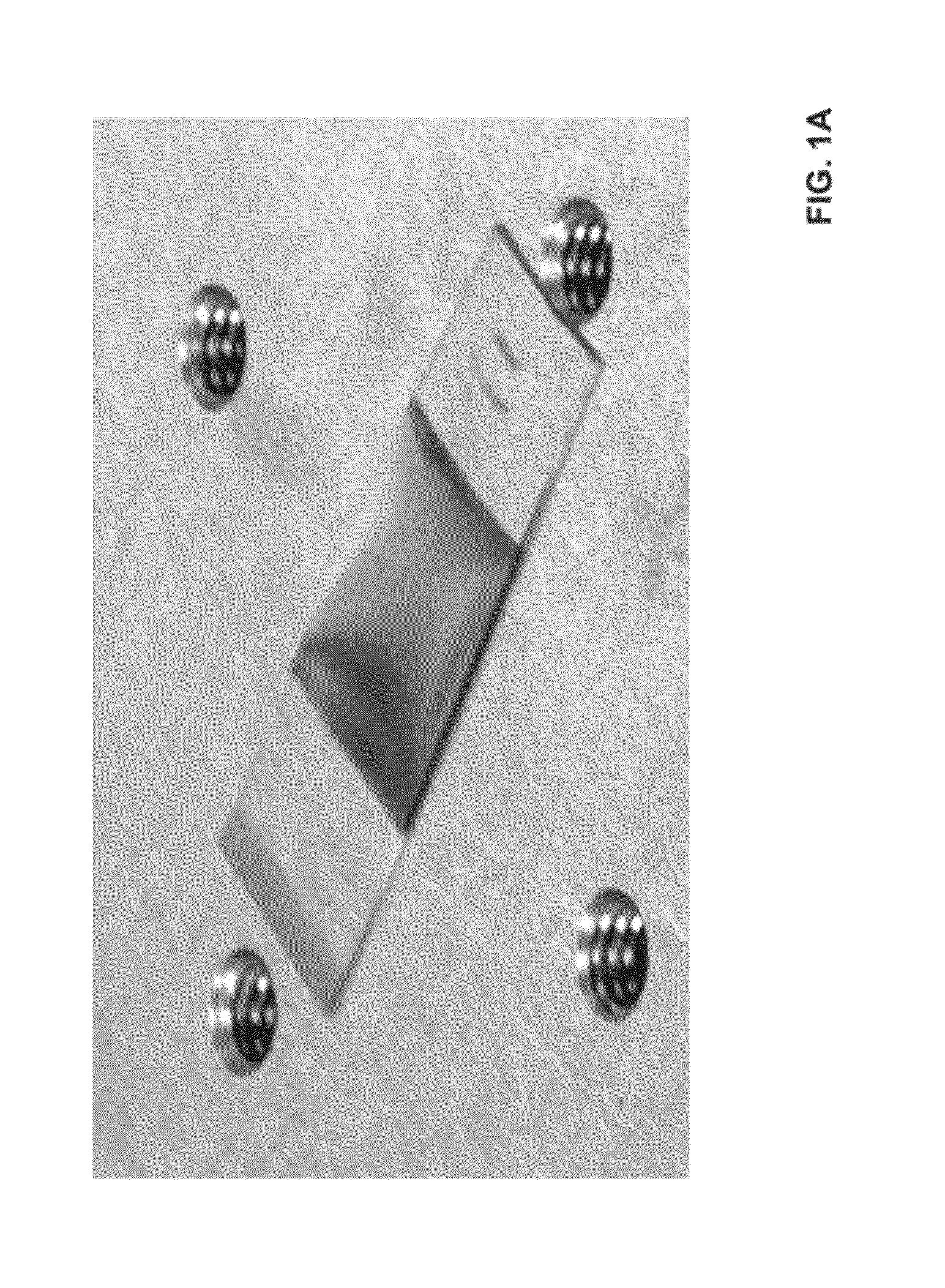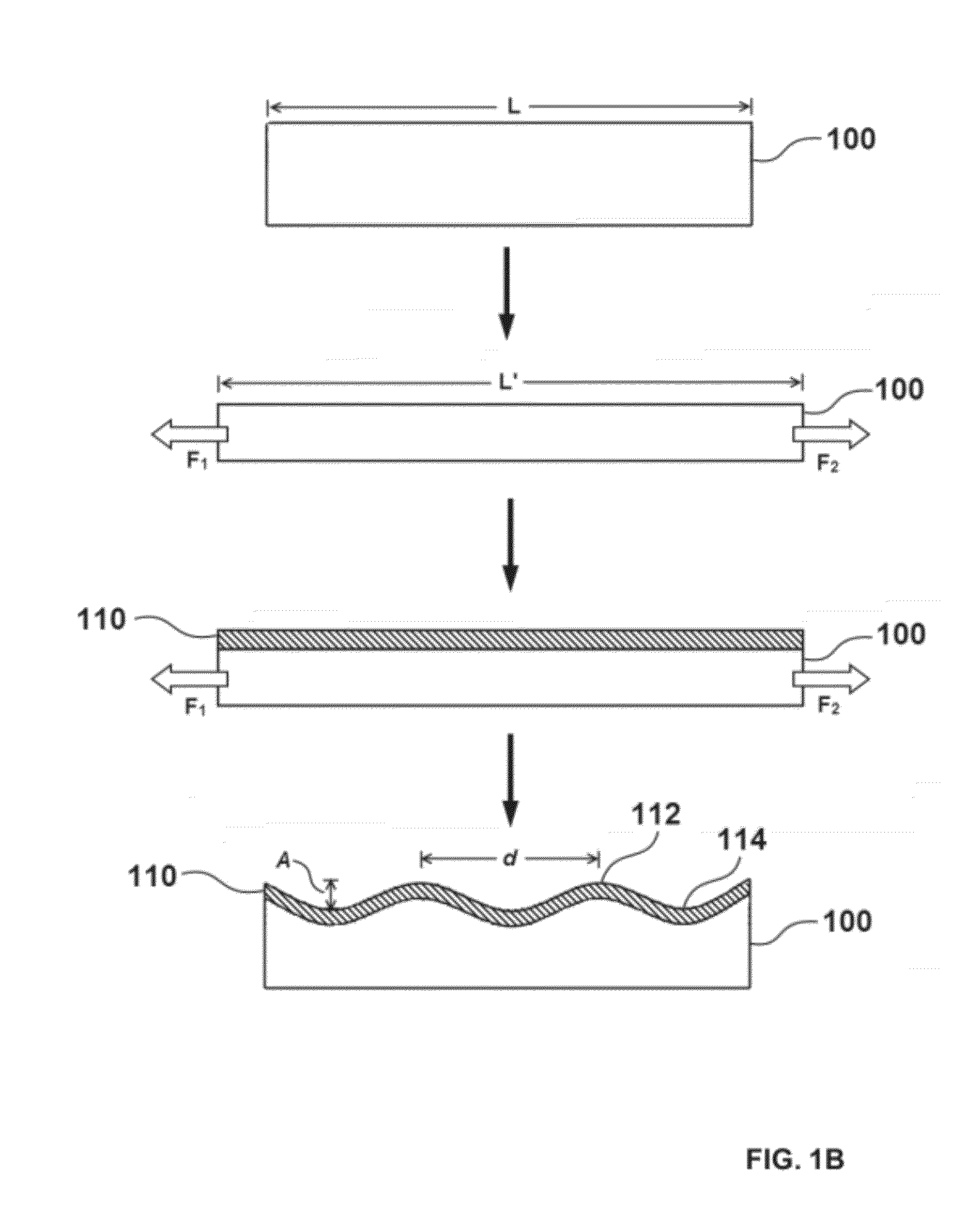Optical diffraction gratings and methods for manufacturing same
a technology of optical diffraction gratings and manufacturing methods, which is applied in the direction of optical elements, vacuum evaporation coatings, instruments, etc., can solve the problems of affecting the diamond turning process, gratings produced by the ruling engine, and affecting the quality of the diamond
- Summary
- Abstract
- Description
- Claims
- Application Information
AI Technical Summary
Benefits of technology
Problems solved by technology
Method used
Image
Examples
example 1
[0096]In a first example, a transparent PDMS substrate was prepared by casting a mixture of base and curing agent at the ratio of, for example, 10:1 by weight, cured and cut to desired sizes. A 1 mm-thick PDMS strip (10 mm by 40 mm) was subjected to oxygen plasma treatment (50 Watt, 1 min) and then pre-stretched by a custom made stage, at a desired amount of pre-strain. An ultra-thin Au / Pd (95% / 5%) film, about 11 nm-thick, was then sputtered onto the pre-stretched PDMS substrate. In one aspect, the relaxation of the pre-strain in the PDMS compresses the Au / Pd thin film and leads to thin films buckle in a periodic shape with buckling period in the micron range. From images of scanning electron microscope (SEM) and atomic force microscope (AFM), the buckling period d and amplitude A are measured as 1.21 mm and 0.19 mm, respectively. These values agree well with the analytical analysis (Eq. 1) if the following material parameters are used, Ef=80 GPa, Es=2 MPa, hf=11 nm, nf=0.3, ns=0.49...
example 2
Grating Performance
[0097]The periodic pattern of a buckled thin film grating can provide diffraction properties for a grating. The law of diffraction can be expressed by the grating equation:
[0098]nsin(θm)-nisin(θi)=mλd,(4)
[0099]where θi and θm are the angle0s of incidence and the mth diffraction order, respectively; ni is the refraction index of the incident medium; n is the refraction index of the medium where the diffracted orders propagate; λ denotes the wavelength of the incident light; and d is the period of the grating. For example, for n=ni=1 as air, θi=0, the first order diffraction spectra of visible light whose wavelength ranges from 380 nm to 760 nm would disperse at over an angular range from 22.3° to 49.5° for a grating period of 1 mm;
[0100]while the spectra would occupy a smaller range of angles from 2.1° to 4.4° for a grating of 10 mm period, making it difficult to distinguish the spectrum. Thus, to achieve a substantial diffraction over the visible light rang...
PUM
| Property | Measurement | Unit |
|---|---|---|
| thickness | aaaaa | aaaaa |
| thickness | aaaaa | aaaaa |
| temperature | aaaaa | aaaaa |
Abstract
Description
Claims
Application Information
 Login to View More
Login to View More - R&D
- Intellectual Property
- Life Sciences
- Materials
- Tech Scout
- Unparalleled Data Quality
- Higher Quality Content
- 60% Fewer Hallucinations
Browse by: Latest US Patents, China's latest patents, Technical Efficacy Thesaurus, Application Domain, Technology Topic, Popular Technical Reports.
© 2025 PatSnap. All rights reserved.Legal|Privacy policy|Modern Slavery Act Transparency Statement|Sitemap|About US| Contact US: help@patsnap.com



